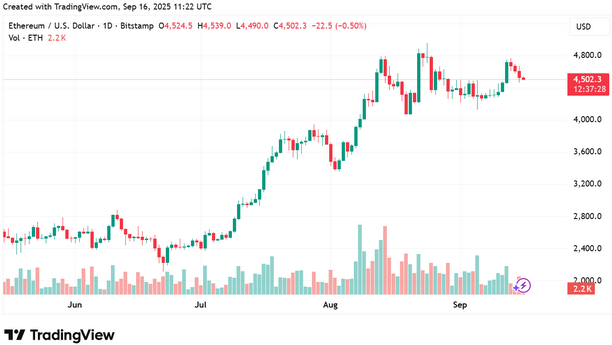Blockchain: The New Key to Owning Digital Stuff

Initially, NFTs were being sold as digital art, but the marketplace has shifted to a way of providing evidence of ownership in the online world. Blockchain transparency is at the core of this change; this is the system of verifying data publicly and unalterably to provide new means of establishing trust on the Internet.
The New Importance of Digital History
The problem of provenance or evidence of provenance has been among the staples of the traditional art world. NFTs act like a digital certificate of authenticity. One of the uses is currently being used to track the provenance of items, including luxury bags or intellectual property, which can be scanned by a user to get the full creation history of the item, ensuring that ownership is authentic and no third party or authority has to validate the item.
This has made analysts speak of a transparent commerce in which the history of transactions, between production and resale, has become available on-chain and has provided more accountability. Verifiable transactions as a principle are becoming widespread in industries despite the fact that mainstream adoption has a way to go.
From NFTs to Data: How to Verify Anything
NFTs demonstrated the idea of blockchain as one of the examples of a trustless verification system, but the technology has many other uses. The areas that depend on accuracy and transparency, namely supply chain logistics, healthcare, and identity management, are investigating this blockchain tech.
- Supply chains: The IBM Food Trust and VeChain pilots can be regarded as demonstrations of blockchain pilots that trace the items and all their steps and assist in avoiding fraud and offering more traceability.
- Healthcare: Blockchain experiments systems are used to ensure the integrity and auditability of patient data; however, centralized electronic medical records are still widely used.
- Digital identity: Self-sovereign identities (SSI) enable individuals to distribute and manage individual claims without a mediator, and prototypes exist in Sovrin and uPort.
Blockchain creates a shared, permanent record that is very hard to change, making it more trustworthy than a private database controlled by one company.
Beyond NFTs: A Clearer Look at Blockchain
Other online casinos and games are exploring the use of blockchain to certify that their games are fair. They provide this way of letting the player confirm that the result of the game (such as the shuffle of cards or a roll of dice) was not altered later, but it somewhat requires some technical expertise.
The latest studies, such as the reviews of crypto game platforms, like this review of Stake casino, mention how the use of decentralized record-keeping and cryptographic verification can contribute to user trust. Though the studies in this situation usually aim at gaming, the principles, such as transparent smart contracts, tamper-proof ledgers, and verifiable outcomes, are applicable to NFTs and other Web3 items.
Web3: Everything’s Starting to Connect
The interaction of the sub-areas of Web3, such as NFTs, decentralized finance (DeFi), blockchain games, and digital identity via the common concept of transparency and immutability, is one of its identifying characteristics.
- NFT-based games: NFT games are games that have verifiable fairness, transparent scarcity, and allow players to have true ownership of in-game items through smart contracts, which do not involve any biasing 3rd party.
- Decentralized marketplaces: Peer-to-peer trades can be backed by smart contracts that omit any form of bias from 3rd parties and decrease the risk of tampering through manipulation.
- DeFi protocols: Liquidity pools and transaction history are publicly available so that users can observe the activity of the platform by themselves.
Familiarity with verifiable systems in one area, like NFT ownership, builds a demand for that same transparency in others. The concept of provable digital ownership, popularized by NFTs, has been introduced, but it is not yet a standard feature across the internet.
Transparency: The New Normal
Transparency of blockchain is a more general change in digital culture. Traditionally, data, algorithms, and verification were operated centrally and in black box settings. The challenge posed by Web3 is that it puts the power back into users in terms of verification.
- To creators: Providing a more equal portion of royalties and a lasting credit on their creation is just one method in which decentralized forms of governance are applied in the digital realm.
- To the consumers: Buyers will be able to review verifiable histories of what they are purchasing and receive a more enduring credit for their creation.
- To communities: Decentralized models of governance provide transparent, non-corruptible open systems.
This simple idea, which states that you should be able to see what you are buying and you should know it is the true form of the idea, which may just become the new standard of all that we do on the internet in the coming decade.
The Big Idea Behind Web3
The main concept of blockchain is establishing trust by demonstration. Whatever the field it may be, a marketplace, an app, or a game, blockchain does not entail empty promises but verifiable outcomes.
As noted by sources like CCN, this move toward open, transparent systems is a major frontier. Industries from gaming to digital identity are exploring how this “show, don’t just tell” model works. Rather than “trust me,” it’s “see for yourself,” which may allow the internet to be rebuilt on transparency and verifiable data, which makes it far more trustworthy for all.
The post Blockchain: The New Key to Owning Digital Stuff appeared first on NFT Plazas.
You May Also Like
